In the throes of winter, gathering wild food often takes a backseat to using up what we have dried, fermented, frozen, or preserved. On the other hand, for those who hunt, the season has the added dynamic of being far more active. Shellfish, too, are at their prime. For freaks like me there is always the lure of ingredients transformed by the extremes of the season–conifer needles seem especially aromatic. The residual fruits that linger have been bletted to the point that deep, resonant flavors emerge.
But no matter what your winter kicks are, there are still a number of ingredients that have particular resonance in the fourth season. Prime among these are the sapling twigs of various edible / useful trees, which have a haunting aroma and deep flavor, and can be used not just as hot cuppa refreshers, but also as brines and pickling mediums, or infused into stored up goodies like honey, alcohol, wine, salt or sugar.
In winter, the energy of most herbaceous plants is tied up in their roots. But saplings and trees focus on creating buds and new growth, in order to prepare for spring. This makes for a period in which whole new categories of identifying and appreciating the trees of your area become available. It also means that some of these bits are full of flavor and aroma, especially amongst the thickets of saplings one finds with certain native trees, as well as those that are setting buds to flower in early spring, such as spicebush.
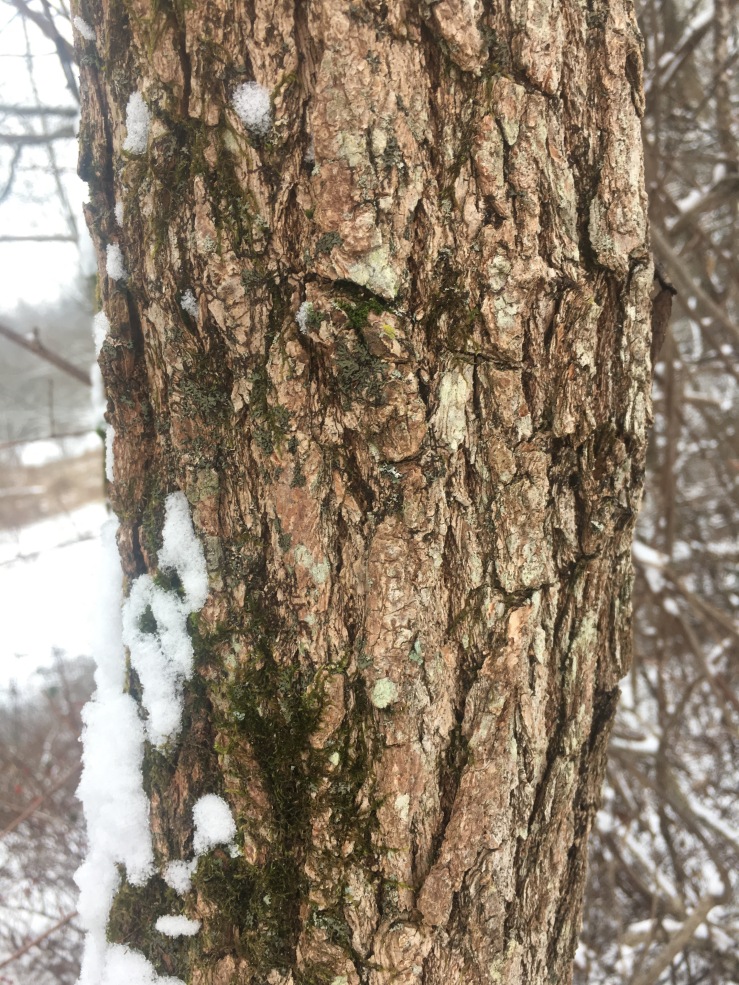
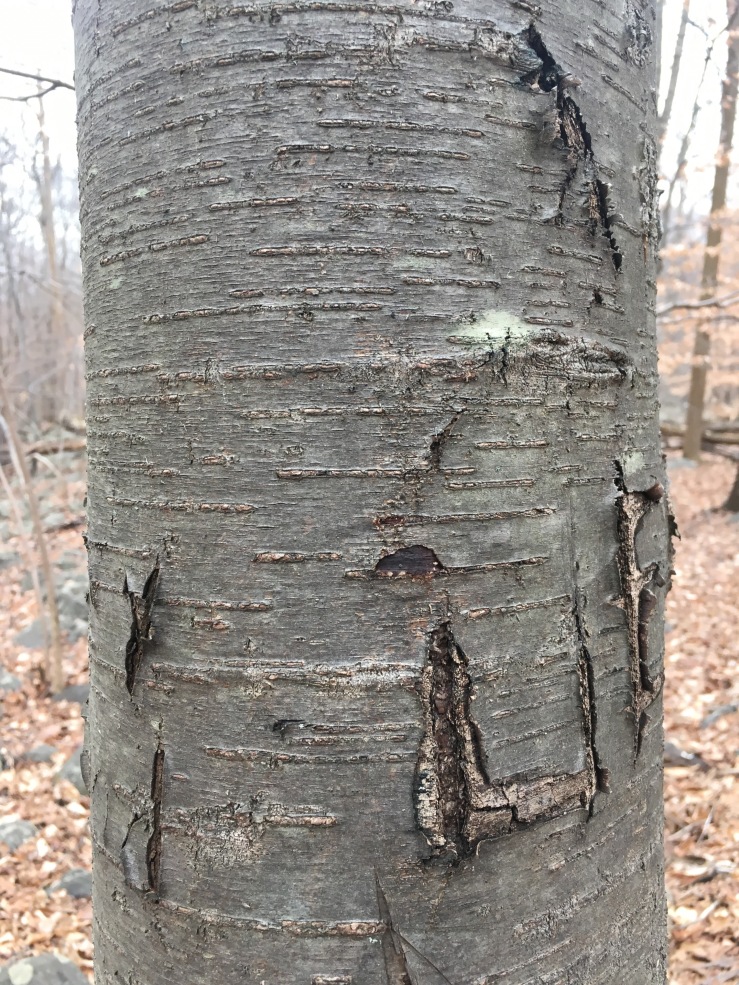
We won’t go hog wild here, but focus on three trees that I use extensively in the winter, all of whom have very distinct aromas which once you have become accustomed to are unmistakable for any other plant or tree. Patches of these trees are best located during the growing season when you can confirm their identity based on other characteristics such as leaves, fruit, flowers or catkins. Of course, there is also no reason one can’t use the bark year-round, but it is an especially welcome addition to the basket in winter. To check your saplings for smell, crack a fresh bit of new growth so the inner bark is exposed and get a strong whiff of it. If you have a lack of scent, you may have the wrong tree, or perhaps one which is weak and not worth collecting. This is especially the case with lower-hanging branches of older sassafras trees, which often become brittle and weak in flavor as they die off.
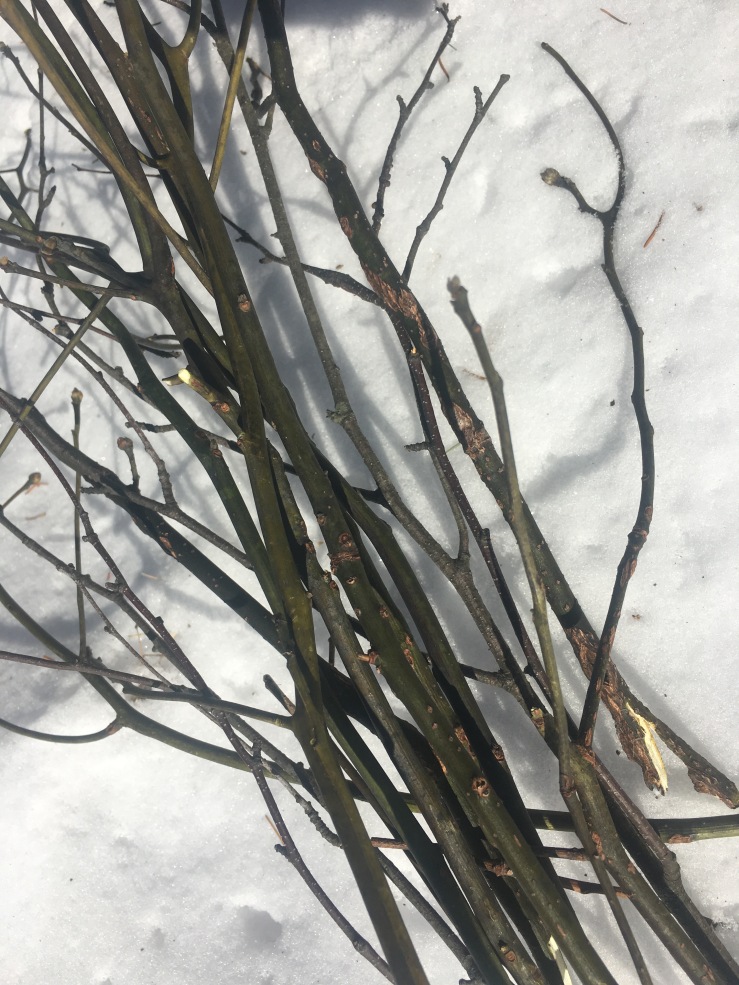
Sassafras (Sassafras albidium)
Many foragers know of the incredible taste of sassafras roots, and some will have used the leaves for a seasoning and thickener (known as filé gumbo to Creole cooks), but the vigorous young growth of saplings and twigs have garnered little attention. One is able to approximate the flavor of the root-based tea in a more sustainable fashion by collecting twigs instead of digging up plants, an activity which is also often difficult in the winter months. When gathering sassafras twigs, I look for cleared or semi-maintained areas near a line of mature trees, where one can often find small clumps of young sassafrases growing almost on top of each other. This strategy can be extended to the sweet birch as well, which I tend to collect only when I can find a thicket of them. Sassafras are notoriously weak-rooted trees as well, and one can often find larger specimens toppled after intense storms. In all cases one wants the green or red new growth which is flexible rather than brittle (you will want a pair of bypass pruners to cut these branches, don’t attempt to tear them), and which carries a strong and unmistakeable scent of sassafras. Many compare it to root beer, but I find it a bit more mellow and earthy, less cloyingly sweet than commercially produced soda drinks.
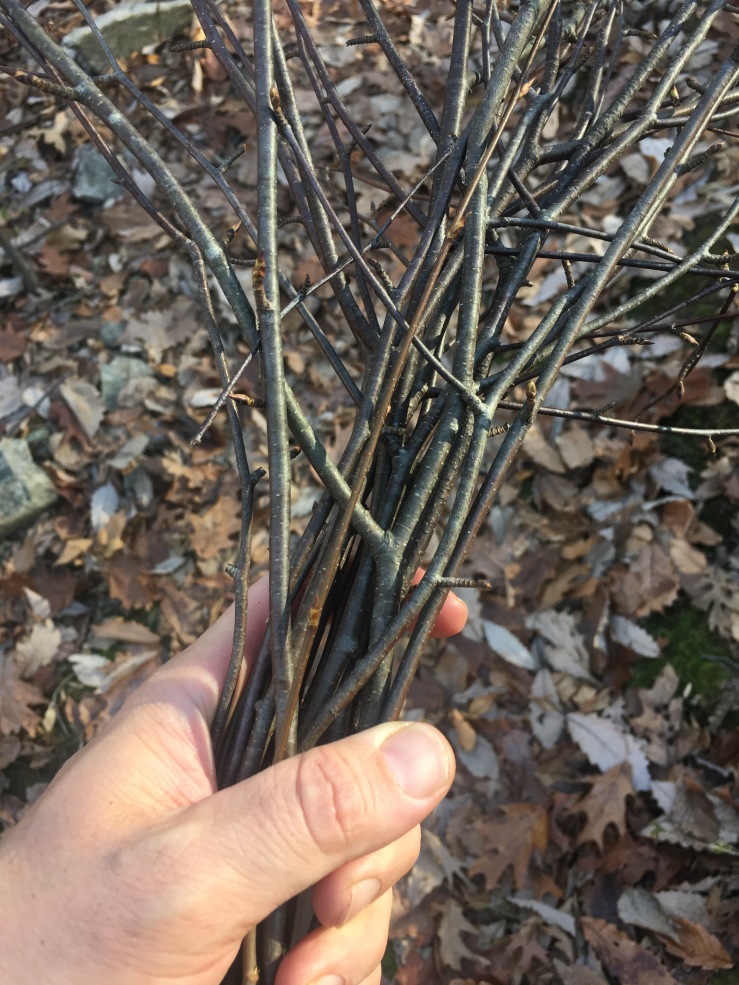
Sweet Birch (Betula lenta)
Sweet birch trees tend to grow very tall and narrow, seldom having any branches within easy reach. It is best with this tree to locate the small thickets of saplings which will grow, often clustered on sloping ground, near more mature trees. While the adult trees have bark that is almost black, the saplings will be a chocolatey brown to dark grey color, with leaf buds forming in fall and persisting over winter. These buds can be used to make a seasoning salt (as can those of sassafras, or the flower buds of spicebush), but they are also a good indicator of the identity of sweet birch. The saplings tend to grow very straight and upright, with few side branches, never becoming bushy or densely-limbed like spicebush. The scent of the broken twigs is quite similar to wintergreen, and will remind old-timers of traditional birch beer. The taste when brewed is not exactly that of wintergreen, but has a more well-rounded flavor, making for a surprisingly good brine as well as tea. The yellow or golden birch (Betula alleghaniensis) has a similar smell to the snapped twig, but I find its’ flavor to be more on the bitter side when brewed. You may wish to experiment more than I if this tree is common in your area, I have very little of it so tend to leave it alone.
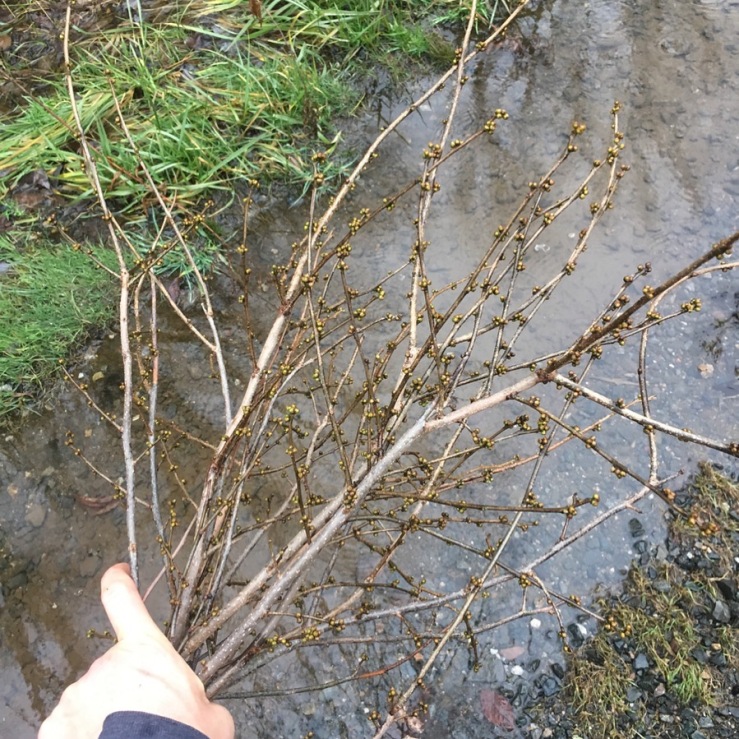
Spicebush (Lindera benzoin)
Those who know me know spicebush is a plant I am an insane raving lunatic advocate for. In my area it is most abundant, one of the few natives to have survived the onslaught of invasive plants, canes and shrubs that have slowly taken over our hardwood understory. It is a four-season edible, and probably bears a lot of the responsibility for why I am an advocate of winter foraging. It has a completely distinct scent, but you have to smell it to know it. The most common use by foragers for this bushy shrub has been the ripe fruit, collected and dried in fall to make a kind of “allspice” type seasoning. There are many more ways to use it. In winter, I mostly collect the branches from public parks and maintained trails–spicebush will grow in abundance along the edges of biking and hiking trails, so I try to keep my branch collection to the spots where these bushes will inevitably have to be trimmed and truncated by park officials. I like to think that some of them wonder why their job has already been done, but more likely than not they don’t give it a second thought. If you are wanting to collect flowers of spicebush in the spring, or fruits in summer and fall, I recommend collecting only limbs of male trees, which do not have visible flowerbuds developing. If you do collect female limbs, consider stripping the tiny spherical flowerbuds to make capers or a seasoning salt.

Wild Bark Teas and Brines
Any of these three trees will make an excellent tea, a process best done in either a stockpot held at very low heat or a slow-cooker on warm or low setting. I greatly prefer the slow-cooker method. It is easy, stress and attention-free, and I never have to worry about the process boiling over. While I don’t think any real damage is done to the nutrition of the tea by boiling (unlike conifer needle teas, which lose their Vitamin C content), it does no favor to the flavor, and generally increases the bitterness of the end product. One thing that certainly must be done, whether making this tea in a slow-cooker or on a stovetop, is to strain the finished tea through cheesecloth or clean kitchen towels. Wild barks tend to have saponins in them which will concentrate on the surface of the tea (they will look like small amoebas or spots of fat), but these are easily removed by straining through cloth. I use the same ratio of liquid to twigs/bark that I use when making coniferous trees, about 1 oz. of material for every 3 cups of water. The same 1:3 ratio applies naturally for a metric measure, I tend to use 200 g for every 600 g of liquid. Note that this is weight of dry ingredients vs. liquid measure for water.
The resulting tea can be drunk as is, chilled or mixed with sugar and chilled, salted and turned into a pickle brine (use 3-5% salinitiy depending on your ingredients to be fermented), or salted and used to brine meats (especially good with pork) or other ingredients for cooking (usually you will want more like 8% salinity, with the amount of time resting in the brine depending on the weight and muscle density of the product being brined). They make excellent kombuchas, either combined 50/50 with tea or raspberry/blackberry leaf Kombucha, or in their own right with a SCOBY and a bit of active kombucha simply added to the wild bark tea. I have enjoyed single flavor teas and brines made with only one of the above mentioned teas, and I have also used two or all of the barks combined to make a complex, multiple bark tea.
If you have a slow-cooker with a warm setting or a clippable thermometer you can also create a basis for a wild yeast beer or mead by making this tea, just be sure to keep the temperature below 140 degrees F, at which point the wild yeast which is abundant in the bark will be killed off. Another option is to replace water in a brew boil with wild bark tea, and then cool before pitching with conventional brewing yeast.
All three of these wild barks also make excellent syrups, individually or combined, which can be started as a simple syrup (1:1 sugar to bark tea or 2:1 sugar to bark tea), but which can also become sorbets or granitas, or indeed the branches may be infused in milk for ice creams or gelati. Infusions in wine or spirits also produce strong results, although for sassafras extract (comparable to a vanilla extract) I tend to prefer the roots for maximum concentration of flavor.
Cold brewing and infusing with these barks is also an option, but I have had much more success with them used as aromatic components in a botanical mix (for vermouth, bitters, or honey-based infusions) as opposed to a “sun tea” or cold-brewed tea which I do not think extracts enough flavor and is certainly more dicey health-wise. I suggest a hot brew to create a liquid base and then proceeding from there in all applications using wild bark.
Perhaps obvious to some, but certainly worth mentioning : since all these thin saplings and twigs are harmless in every way for food use, so they also make excellent kebab skewers! As a child, I used to gnaw on sweet birch sticks and even today a little nibble of sassafras or spicebush bark can provide stimulation on a long winters hike.
Safrole oil, in sassafras, is carcinogenic (mostly liver, I believe) can damage kidneys, cause allergies & hallucinations. Sales of sassafras or sassafras products are banned unless the safrole is removed. One cup of tea contains 3 times the maximum amount considered safe.
Please educate people on the dangers of common wild plants and precautions needed.
LikeLike
Safrole is insoluble in water. https://ntp.niehs.nih.gov/ntp/roc/content/profiles/safrole.pdf
LikeLike